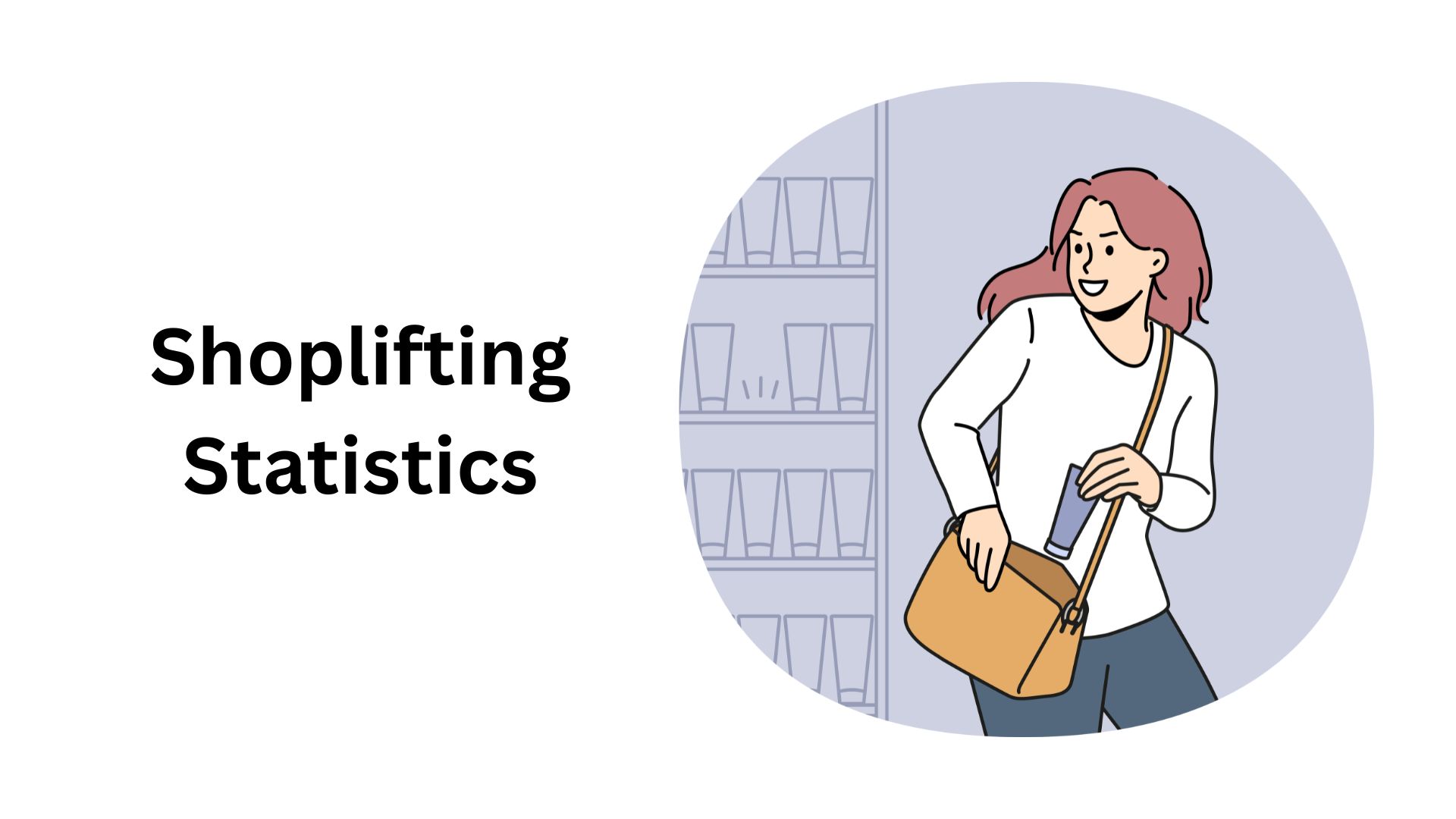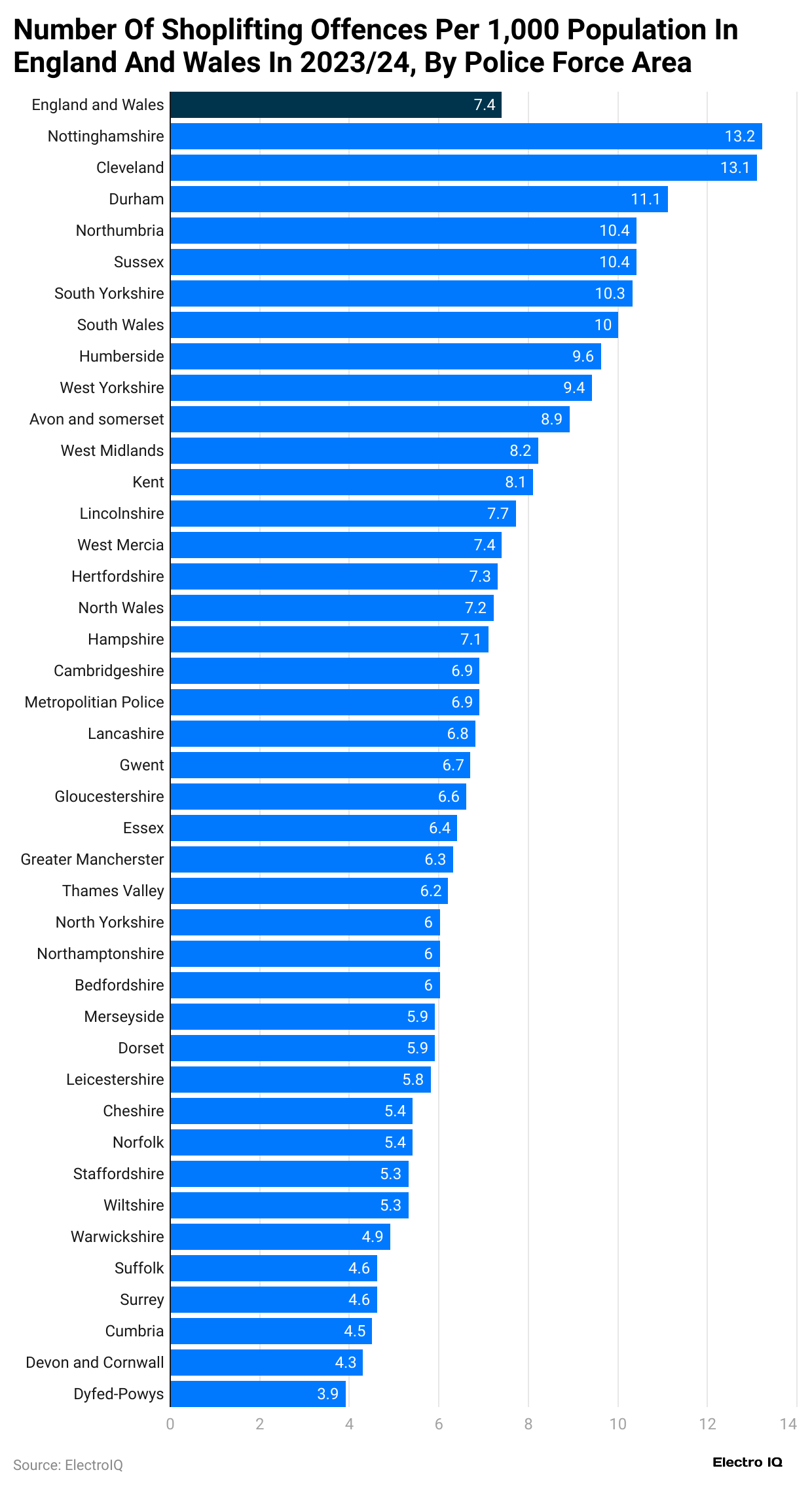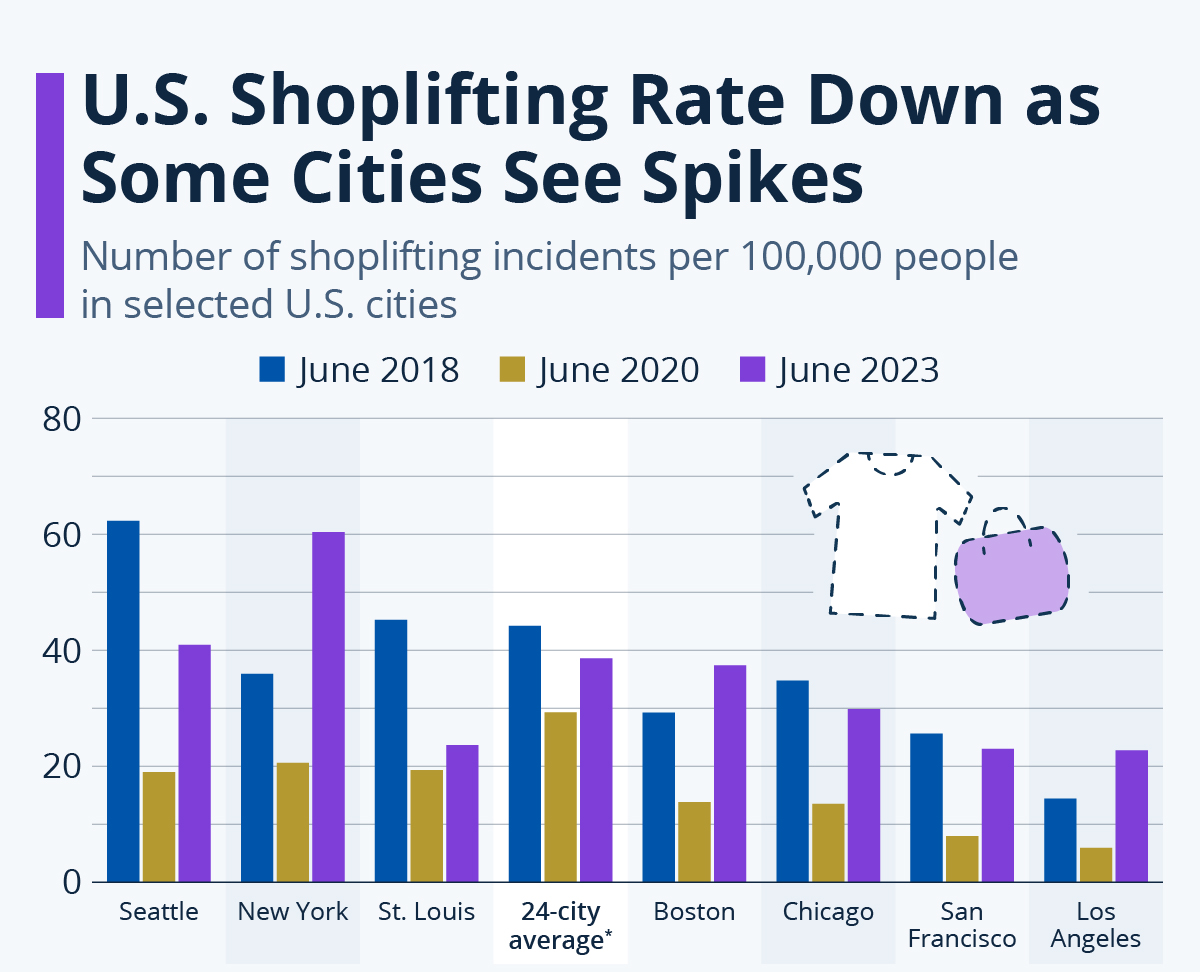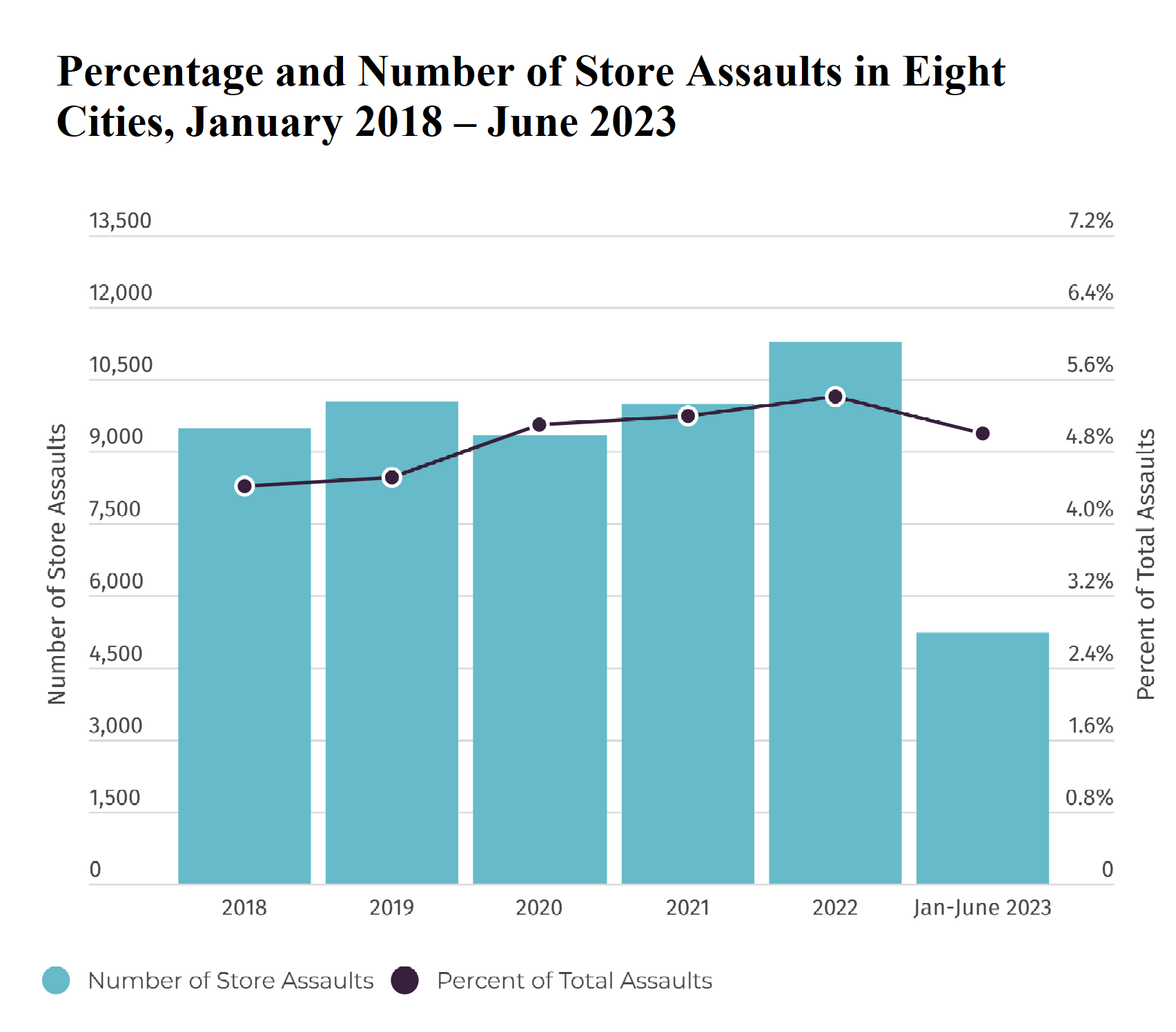Shoplifting Statistics By Businesses, Demographics And Facts (2025)
Updated · Sep 11, 2025

Table of Contents
- Introduction
- Editor’s Choice
- Number of Shoplifting Offences by Police Force Area
- Number of Shoplifting Incidents in US Cities
- Percentage and Number of Store Assaults in Eight Cities
- Shoplifting Statistics for Small Businesses
- Record Surge in Shoplifting Offences In the UK
- Shoplifting Demographics
- Conclusion
Introduction
Shoplifting Statistics: The year 2024 has remained crucial for all retail businesses, and shoplifting poses one of the major challenges for retailers all over the world. Entrepreneurs grip the handles of economic pressure to retard or restrict retail trade, and organized retail crime has just added insult to injury with vandalism and theft in various techniques.
This legal exploration will present recent shoplifting statistics in various key markets around the world.
Editor’s Choice
- Shoplifting incidents in England and Wales were estimated at 7.4 offences per 1,000 people in 2023/24, with Nottinghamshire having the highest incidents at 13.2.
- In the United States, the levels of shoplifting in 2023 had risen from the lows of the pandemic days but had not nearly attained or surpassed the highs of 2018- 2019. Shoplifting in New York City peaked at 69 per 100,000 persons.
- Assaults in retail establishments in eight cities in the USA went up from 10,024 cases in 2019 to 11,273 in 2022, making up 5% of total assaults; early 2023 showed a 7% drop from 2022, but an 8% increase from 2019.
- Around 20% of all small businesses undergo shoplifting several times in a week, while 15% go through shoplifting daily; this monetary loss ranges from US$500 to US$2,500 per month for 75% of all small businesses.
- Shoplifting offences were registered as 516,971 in 2024-a 20% rise from 2023 and the highest since 2003. Heist estimated 6.2 million at convenience shops alone.
- Thefts cost the average Scottish convenience store £19,673 every year increase of some £5,000 from years before.
- 6% of shoplifters are under 30, with the most represented age group being 18 to 29 years. Women report a slightly higher rate of shoplifting than men- 43% to 37%.
- From racial arrest data for the year 2019 in the U.S., it appears 69.4% of those arrested were white, 26.6% Black or African Americans, and 4% were from other races.
Number of Shoplifting Offences by Police Force Area

- As per a Statista report, shoplifting statistics show that the shoplifting rate of England and Wales stands at 7.4 offences for every 1,000 people during 2023/24. This denotes the average occurrence of shoplifting acts throughout the entire population in these regions. However, the rate is much higher in some areas.
- The rate for Nottinghamshire, a county located in the East Midlands of England, stands at the highest, with 13.2 shoplifting offences per 1,000 people. This means that shoplifting cases in Nottinghamshire occur almost twice as much as the national average.
- Yielding second is Cleveland, a region found in North East England, with its rate standing at 13.1 per 1,000 people. This meant shoplifting frequencies were almost twice the average in the nation.
- Not far behind was the North East region of England, with the census identifying the rate at 13.1 per 1,000 inhabitants. These figures depict the regional differences in shoplifting activity.
Number of Shoplifting Incidents in US Cities

- Amid regional concern about retail theft in the United States, recent data from a 24-city sample, as analysed by the Council on Criminal Justice, proves that shoplifting is still below levels pre-pandemic during 2018 and 2019.
- As per Statista, shoplifting statistics data also show an evident rise in occurrences of shoplifting in 2023 when compared with the pandemic lows.
- Some cities stand out in having huge spikes in retail theft. New York City, particularly, has seen significant increases in shoplifting as the City had just about 36 incidents of shoplifting per 100,000 people in June 2018, surged to 69 per 100,000 people in August 2022, and stood at 60 per 100,000 as of June 2023.
- Somewhat similar examples have been set by Boston and Los Angeles, though at lower rates, as the cities reported between 20 and 40 incidents per 100,000 people in June 2023 as opposed to 15 and 30 in mid-2018. The Boston rates were quite irregular before the pandemic.
- On the other hand, places like Seattle and St. Louis have had a decline in shoplifting relative to the pre-pandemic times.
- The report emphasises that there is no obvious regional pattern that can explain why shoplifting increases in some cities and decreases in others.
- So, the rise and fall in the rates of shoplifting reflect those of the larger larceny-theft category, which also includes crimes such as burglary and robbery.
- Finally, these crimes declined during the COVID-19 pandemic and have never quite come back up to their previous levels.
- Vehicle theft has one major exception, though; it has witnessed a sudden rise and continues to buck the trend in other property crimes, as was also pointed out by the latest annual crime report by the FBI.
Percentage and Number of Store Assaults in Eight Cities

- Between the years 2019 and 2022, retail assaults have been increasing in the ranks of the eight great cities of the United States.
- Following the year 2019, these cities gave a report of 10,024 assaults occurring in retail stores, which in 2022, had increased to 11,273.
- These figures comprise matters of assault-simple and aggravated-that took place in retail settings irrespective of whether the incidents were related to shoplifting or not.
- Between January 2018 and June 2023, assaults in retail stores represented between 4.4% and 5% of all reported assaults.
- In the specific first half of 2023, a decrease of 7% in retail store assaults was recorded when compared to the first half of 2022.
- However, the number of assaults for this time frame in the year 2023 was 8% higher than the number of assaults during the same period in 2019.
Shoplifting Statistics for Small Businesses
- Shoplifting is a perennial issue which is expensive for small business retailers. About 20% experience it multiple times a week, and some 15% say it occurs through shoplifting daily.
- The financial loss is high; 75% of small business owners testify that they lost between US$500 to US$2,500 per month because of theft.
- In 2023, 41% of small business owners stated that the value of stolen goods was higher compared to earlier years. 56% of victims would lodge a claim with an insurance company, and 53% say they would tell the police about it.
- This growing menace has forced 98% of small business stores to undertake prevention measures to keep it at bay.
Record Surge in Shoplifting Offences In the UK
- Shop thefts shot up by 20% in the year ending December 2024 in the UK, reaching 516,971 offences- the highest level of retail crime ever since police recording practices were introduced in 2003.
- There were 429,873 recorded cases the year before. This sharp increase in shop theft contrasts with general theft, which rose by a meagre 1% for the same period. Hence, the ONS acknowledged it as being “mainly responsible” for the overall increase in theft in the nation. In light of the data, ACS stated that the ongoing trend is that of record-high retail crime.
- According to ACS chief executive James Lowman, a rise in reported incidents matches the experience of shop owners throughout the country, although he warns that the true magnitude of theft is probably much greater.
- The survey by ACS members suggested an estimated 6.2 million thefts in convenience stores, thus revealing under-reporting on a massive scale.
- The Scottish Grocers Federation (SGF), in its recent announcement, stated that crime is now costing the average Scottish convenience store £19,673 per annum, an increase of nearly £5,000 from previous years.
- The figures thus present an outline pattern of the financial drainage that theft and allied criminal activities continue to inflict upon small businesses.
- The government has also announced that, in light of increasing crime, 13,000 officers will be recruited. The idea is that these extra resources, together with new legislative measures, will give retailers stronger support and turn the tide against the growing incidences of shop theft.
- Lowman reiterated the ACS stance on the absolute necessity for revamping the perception of retail crime and its treatment, matter of recognising theft as a serious offence, worthy of police attention and response.
Shoplifting Demographics
- In most shoplifting cases, the alleged person is younger than 30, comprising 66.6% of all such cases. Out of these, 6.2% were children below 12 years of age, 26.7% were teenagers between 12 and 17, while 33.7% were young adults aged between 18 and 29.
- Among these suspected shoplifters, 43% of females said they had shoplifted at least once before, versus 37% of males, indicating that females may have a slightly higher occurrence.
- In the next two years, 18-24-year-old people are the most likely to shoplift, while those 55 and up are the least.
- On the racial side of arrests, however, 69.4% of people arrested for shoplifting in 2019 were white, while 26.6% were Black or African American, and the final 4% came from other racial categories.
Conclusion
Shoplifting Statistics: The sharp upsurge in shoplifting for the year 2024 urges the implementation of a synthesizing approach to technology, policy, and community interaction. Retailers, law officers, and policy formulators need to work together to secure businesses, employees, and consumers from the multi-faced effects of retail theft.
FAQ.
Shoplifting continues to trend upwards in major cities of the continent in several places throughout 2025. Incident rates reported by New York, Los Angeles, and Chicago exceed those of pre-pandemic times; however, some places have started to witness a stabilization or even a slight decline, in part due to better security and prevention measures.
In 2025, it is estimated that retail losses from shoplifting will run in excess of US$115 billion, compared to US$112.1 billion in 2022. This increase is attributed mainly to a higher number of incidents and thefts of larger value, albeit actual totals may shift with updated data and reporting.
Cities such as Chicago, Los Angeles, and New York are still the prime centers of shoplifting activities. For example, the cases of shoplifting rose by 46% in Chicago from January to October 2024 in comparison to the previous year, and this trend is still expected to go upward in 2025. California, and mainly Los Angeles, continues to experience high volumes of organized retail theft.
Urban settings host more shoplifting incidents, accounting for about 65% of all reported cases in 2025. This is because of dense populations, numerous retail outlets, and some degree of anonymity that cities afford to offenders.
Young adults remain the bulk of those arrested for shoplifting. Some 6.2% of incidents involve teenagers, usually under peer pressure or impulsive behaviour. Adults, especially those between 18 and 29 years of age, form a share of 33.7%. There’s no marked difference in rates between men and women, though financial difficulties continue to be principally at stake.

Maitrayee Dey has a background in Electrical Engineering and has worked in various technical roles before transitioning to writing. Specializing in technology and Artificial Intelligence, she has served as an Academic Research Analyst and Freelance Writer, particularly focusing on education and healthcare in Australia. Maitrayee's lifelong passions for writing and painting led her to pursue a full-time writing career. She is also the creator of a cooking YouTube channel, where she shares her culinary adventures. At Smartphone Thoughts, Maitrayee brings her expertise in technology to provide in-depth smartphone reviews and app-related statistics, making complex topics easy to understand for all readers.










